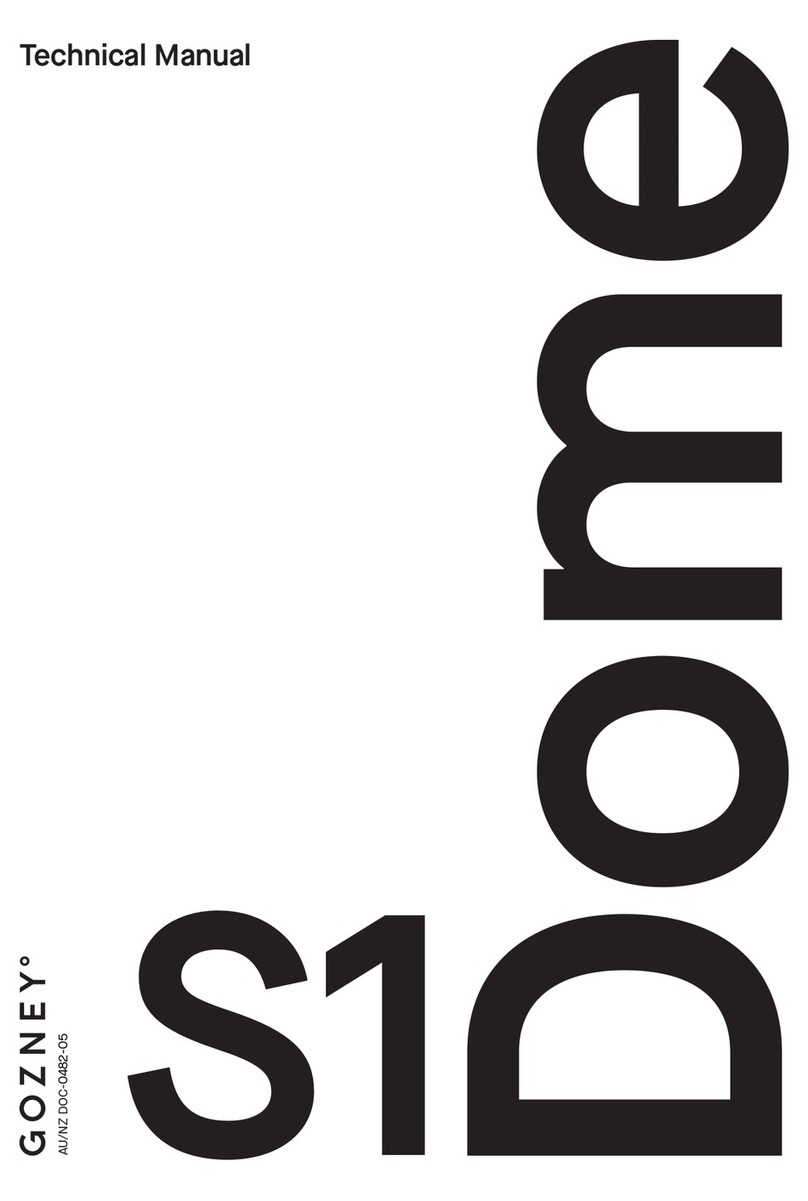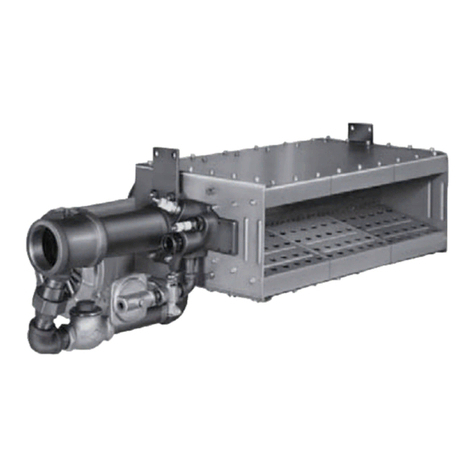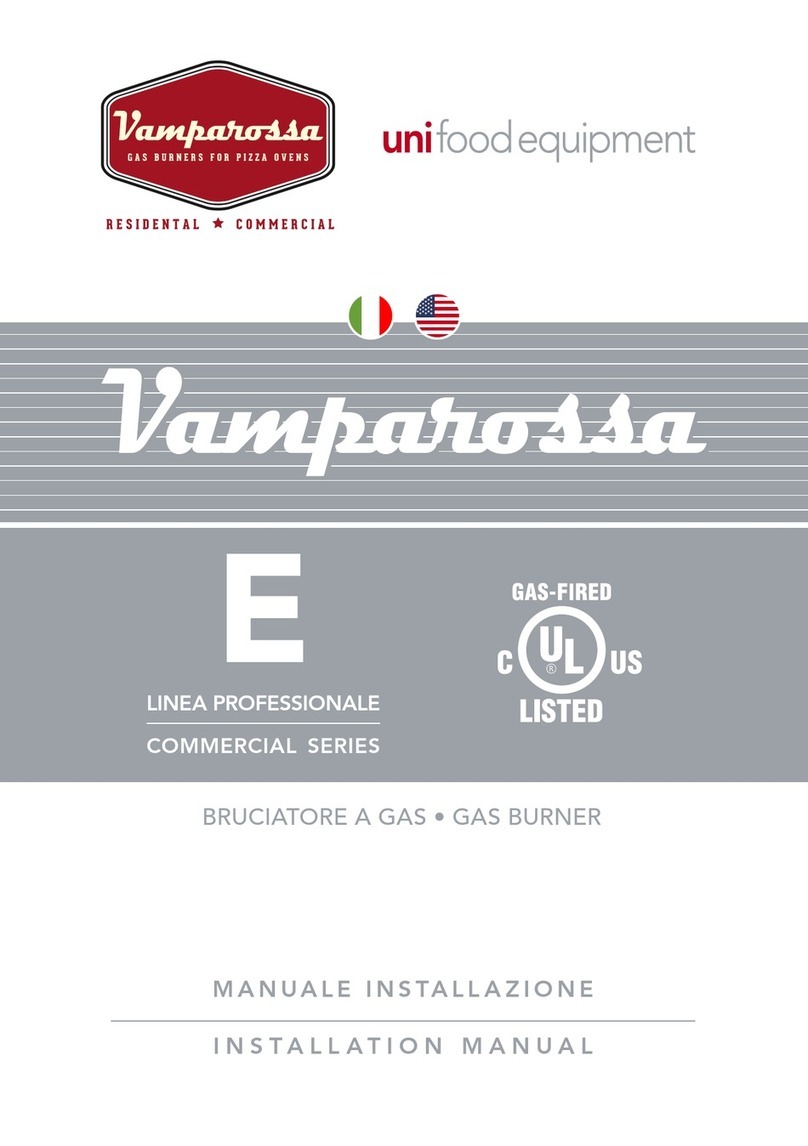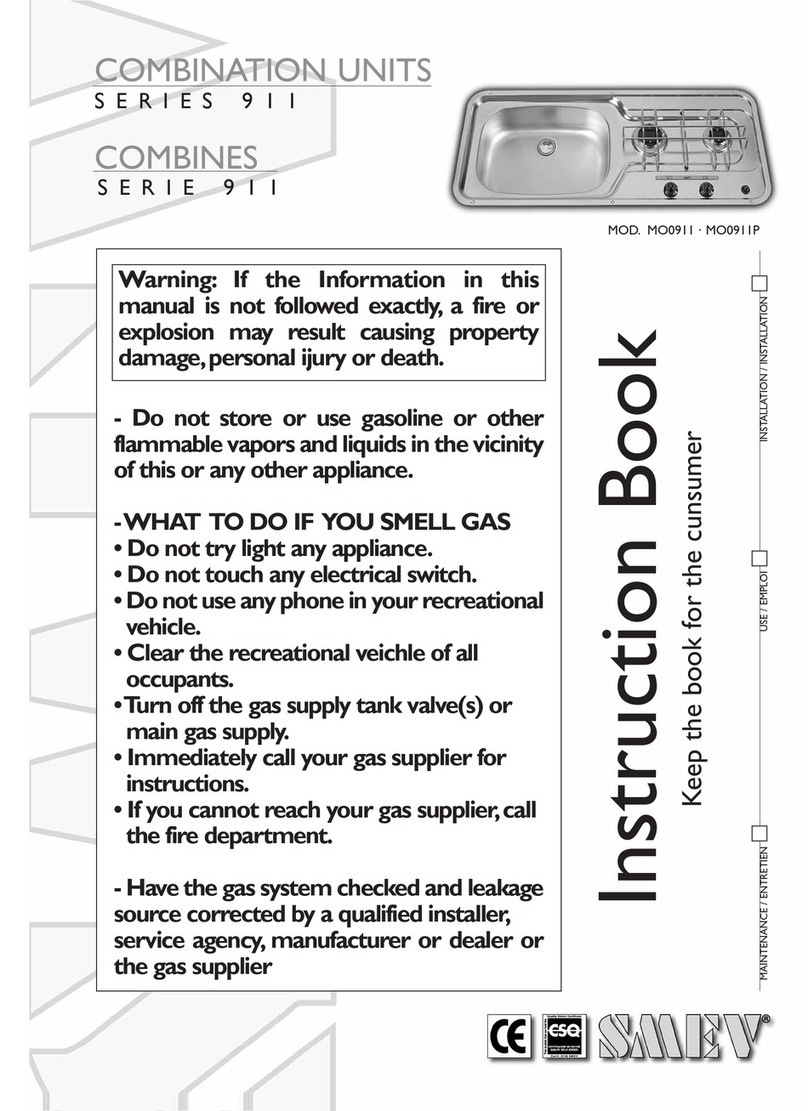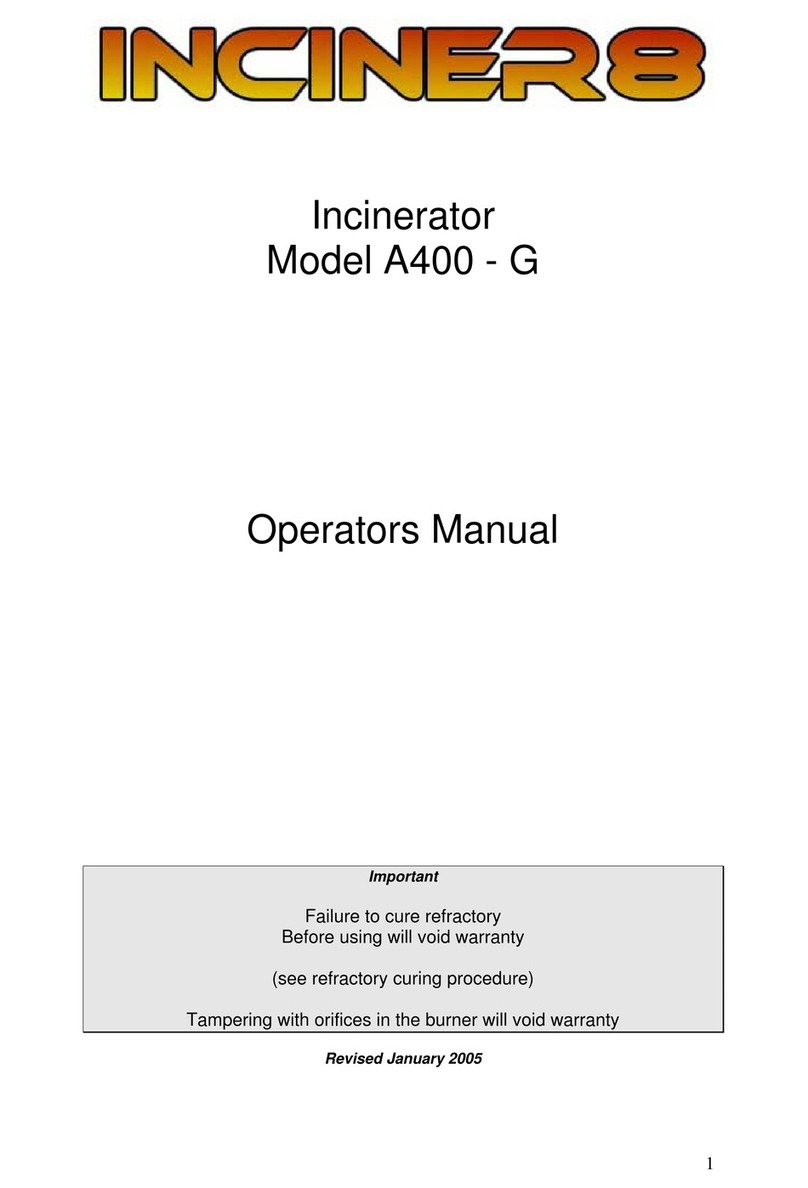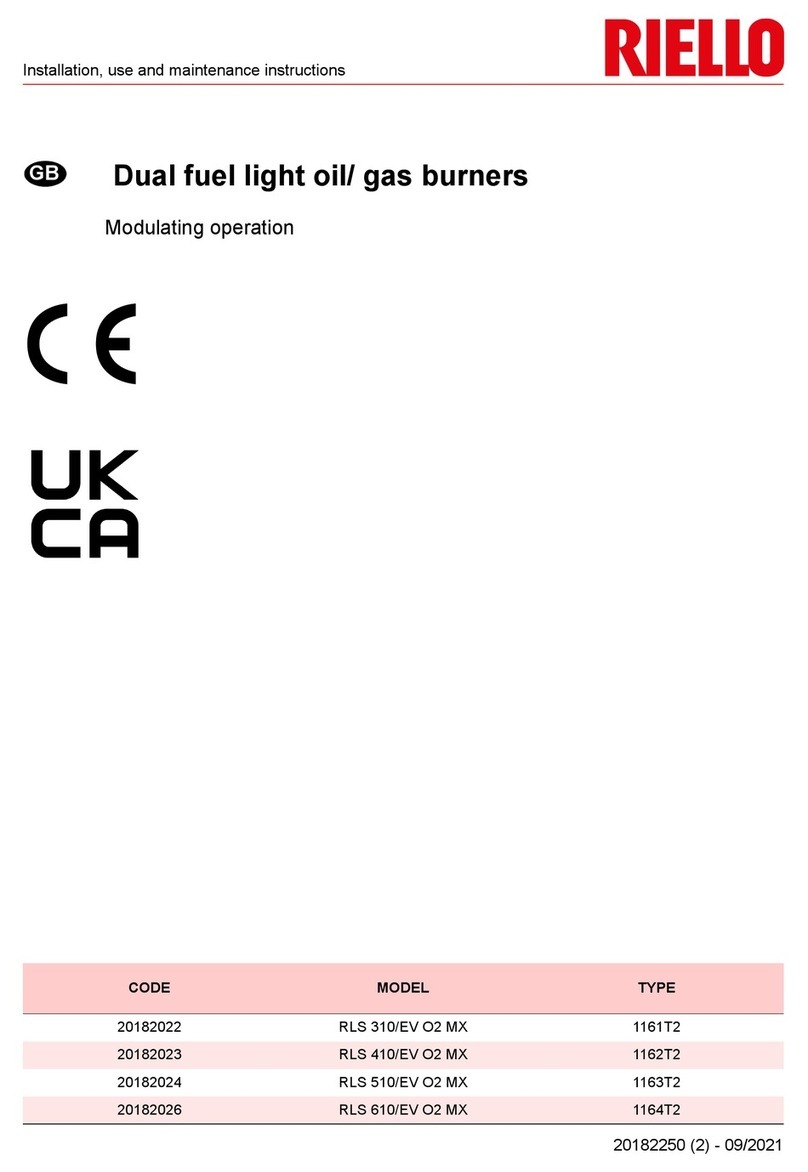KoolMore KM-OKS-SBC User manual

INSTALLATION MANUAL
For any service-related Issues, please contact
us: Phone Number: 718-576-6342
KoolMore Outdoor Kitchen System
Burner With Bottom Cabinet
SIDE BURNER
Model:
KM-OKS-SBC
(Compatible With The KoolMore Outdoor Kitchen System)

Important Warnings and Safety Instructions
WARNING:
• Improper installation, adjustment, alteration, service, maintenance or use can cause injury or property damage.
Please read the installation, operating, and maintenance instructions thoroughly before installing or servicing
this equipment.
Outdoor and Residential Use Only
• This side burner is intended for outdoor use only. Never use indoors or in enclosed areas, such as a garage,
shed, or breezeway.
• It is designed for residential use, not for commercial use. Only the original purchaser (homeowner) should use
and maintain the side burner.
Ventilation and Fire Safety
• Use the side burner outdoors in an open area with good ventilation to reduce the risk of injury from breathing
toxic fumes and the risk of explosion and fire due to leaking gas.
• Keep the area surrounding the side burner clean and free from flammable items like mops, rags, solvents,
cleaning fluids, lighter fluid, and gasoline.
• Always have an ABC fire extinguisher accessible and avoid extinguishing a grease fire with water or other
liquids as this can cause a flashback.
Installation, Repairs, and Maintenance
• Always hire a qualified service technician for installation, repairs, or replacement of parts. If you're not qualified
to perform these tasks, retain a professional contractor or technician.
•Do not heat unopened containers of food on the side burner as pressure may build up and cause the container to burst.
• Keep electrical supply cords away from water or heated surfaces and place them away from walkways to avoid
a tripping hazard.
• Ensure a leak check is done before using the side burner.
Operating Precautions
• Avoid using the side burner in windy conditions or ensure a windbreak is in place if the area is consistently windy.
• Never leave the side burner unattended while cooking.
• Do not use lighter fluid in a gas side burner.
• Never allow children or pets near the hot side burner and never let them operate it.
• When using the side burner, avoid touching hot areas, and use a covered or gloved hand when opening the side
burner hood.
• Always turn off the LP cylinder tank valve when the side burner is not in use, and ensure the control knobs are in
the "OFF" position.
Use Caution and Common Sense
Remember, this safety section alone is not sufficient. Always exercise caution and common sense when operating
the side burner. Read the rest of this manual carefully for other important safety warnings.
California Proposition 65 Warning
The burning of gas cooking fuels (like propane gas) generates some byproducts which are known by the State of
California to cause cancer or reproductive harm. To minimize exposure to these substances, always operate this unit
according to the instructions in this Use and Care Manual, ensuring you provide good ventilation when cooking with gas.
1

Gas Requirements and Safety Procedures
Gas Cylinder Specifications:
• Improper installation, adjustment, alteration, service, maintenance or use can cause injury or property damage.
Please read the installation, operating, and maintenance instructions thoroughly before installing or servicing
this equipment.
CAUTION
• This burner requires a Liquid Propane (L.P.) gas supply cylinder of approximately 12
inches in diameter and 18 inches in height. The maximum fuel capacity is 80%,
which is approximately 20 pounds of propane.
• The gas cylinder should have a shut-off valve (see image in manual) terminating in
a Type 1 L.P. connector. This connector is equipped with a back-check valve that
prevents gas flow until a secure seal is made.
• The cylinder must be set up for vapor withdrawal and must include a collar to
protect the cylinder valve. It should also include a safety relief device that expels
high-pressure gas if the cylinder is overfilled or overheated, preventing possible fire
or explosion.
• All L.P. gas cylinders used with this appliance must be built and marked according to the specifications of the
U.S. Department of Transportation (DOT) or the National Standard of Canada, CAN/CSA-B339. These specifica-
tions cover cylinders, spheres, and tubes for the transportation of hazardous goods. Additionally, they must
come with an overfilling prevention device.
• Always read labels on the L.P. Gas Supply Cylinder.
• New cylinders are shipped empty for safety. Fill or repair your L.P. gas supply cylinder only through qualified L.P.
gas dealers. Inform the gas dealer if the cylinder to be filled is new or used.
•After filling, request the gas dealer to check for leaks and ensure the relief valve remains effective and in good condition.
Hose and Regulator (Comes standard with the side burner):
CAUTION
The cylinder control valve must be turned off before any connection is made or removed. Always check the hose for
breaks or wear before each use.
The Type 1 connection system includes the following features:
• It will not allow gas to flow until a positive connection has been made.
• It has a thermal element that shuts off the gas flow in the event of a fire.
• It includes a flow limiting device which, when activated, limits the gas flow to
10 cubic feet per hour.
• NEVER use the side burner without leak testing this connection.
Shutoff
Valve
Check hose for breaks
or wear before each use
Type 1
Connector
Regulator
Collar
2

Gas Requirements and Safety Procedures
LP (Propane) Gas Supply Connection Procedure:
1. Ensure the tank valve is in the "OFF" position. If not, turn the knob clockwise until it stops.
2. Make sure all burner valves are also in the "OFF" position.
3. Connect the gas supply regulator following these steps:
• Insert the regulator inlet into the tank valve.
•Turn the coupling nut clockwise until it tightens up (see picture in the manual).
Do not over-tighten the coupler.
• Turn on the main tank valve, followed by the burner control valves.
4. When testing the gas supply piping system's pressure, isolate the outdoor cooking gas appliance from the
system by closing its individual manual shut-off valve. This should be done if test pressures are equal to or less
than 1/2 psi (3.5 kPa).
5. Set the unit to the "HIGH" position for approximately 20 seconds to purge any air in the system before attempting
to light the burners.
Pre-Operation Leak Testing:
DANGER
• Never insert any tool into the valve outlet or safety relief valve. This could damage the valve and cause a leak,
leading to a possible explosion, fire, severe personal injury, or death.
• If a leak is detected at any time, or if you are unable to stop a gas leak, immediately close the tank's shut-off
valve and call your LP gas supplier or fire department.
•Before each use and each time the gas supply cylinder is connected to the regulator, check all gas supply fittings.
Any time a part of the gas system is replaced, have a qualified service technician leak test the side burner.
WARNING
Never attempt to connect this side burner to a self-contained LP gas system. Also, do not use the side burner until
leak testing has been completed.
Leak Testing Procedure:
1. NEVER smoke while conducting a leak test.
2. Extinguish all open flames.
Never perform a leak test with an open flame.
3. Mix equal parts of mild detergent or liquid soap and water to create a testing
solution.
4. Turn all side burner control knobs to OFF.
5. Ensure the connections between the regulator, the side burner, and the tank are tight and secure.
6. Open the LP tank valve completely by turning the cylinder valve knob
counterclockwise. If you hear a rushing sound, there is a major leak at the connection.
Turn off the gas immediately.
7. If no rushing sound is heard, apply the soapy solution to the areas where bubbles are shown in the LP tank.
8. If "growing" bubbles appear, there is a leak. Close the LP tank valve immediately and retighten connections.
9. Always close the LP tank valve after performing a leak test by turning the cylinder valve knob clockwise.
WARNING
NOTE: Ensure all loose connections are tested and tightened when leak testing this appliance.
A slight leak in the system could result in a low flame or a hazardous condition that could lead to a fire or explosion.
Bubble
3

Gas Requirements and Safety Procedures
LP Gas Supply Cylinder Disconnection Procedure:
To disconnect the LP tank from the side burner:
1. Turn off the burner valves.
2. Turn off the tank valve by turning the shut-off clockwise.
3. Detach the regulator assembly from the tank valve by turning the quick coupling nut counterclockwise.
LP Tank Removal, Transport and Storage Safety Guidelines:
• Always turn OFF all control knobs and the LP tank valve before removing the tank. Disconnect the tank by
turning the coupling nut counterclockwise using only your hand. Install the safety cap onto the LP tank valve.
Always use the cap and strap supplied with the valve.
WARNING
Failure to use the safety cap as directed may result in serious personal injury
and/or property damage.
• When the cylinder is not in use, place the dust cap on the cylinder valve
outlet. Only install the type of dust cap provided with the cylinder valve.
Other types of caps or plugs may result in propane leakage.
• Never leave an LP tank inside a motor vehicle as increased gas pressure
from vehicle heating can open the release valve, allowing gas to escape and
potentially leading to a fire or explosion.
• Do not store an LP tank in enclosed spaces such as a carport, garage, porch,
covered patio or other building. Keep it out of reach of children.
LP Tank Filling Guidelines:
• Use only licensed and experienced LP dealers.
• The LP dealer must purge the tank before filling.
• An LP tank should never be filled more than 80% of its volume.
The volume of propane in the tank can vary by temperature.
• A frosty regulator indicates a gas overfill. If the regulator is frosty, immediately close the LP tank valve and call
your local LP gas dealer for assistance.
• Releasing liquid propane (LP) gas into the atmosphere is hazardous. Never do this.
• To remove gas from an LP tank, contact an LP dealer or call your local fire department for assistance.
LP Tank Exchange Guidelines:
• Only exchange your Type 1 cylinder for a replacement tank equipped with an OPD safety feature.
• During use, transit, or storage, always keep new and exchanged LP tanks in an upright position.
Before connecting to the side burner, leak test new and exchanged LP tanks.
•Always check the rating plate to ensure that the gas supply to which you are connecting the side burner is the same
type as the gas the side burner is manufactured for.
LP Tank
Valve Retainer
Strap
Safety
Cap
4

5
Installation, Operation, and Maintenance
SAFETY INSTRUCTIONS:
Safety is paramount when operating your side burner. Follow these guidelines to prevent any accidents:
1. Never operate the grill if gas odor is present. Gas leakage can lead to an explosive flame-up.
2. Never stand directly over the grill when lighting. Ignite the burners from a safe distance to prevent accidental burns.
3. Regularly inspect the hose for signs of wear or damage. If identified, replace with a manufacturer-approved
hose before operating.
4. Ensure the surrounding area is free from flammable substances such as gasoline, yard debris, and wood.
5. Maintain clear airflow through the vent space located below the unit's face.
Obstructions can cause gas buildup and are a fire hazard.
INSTALLING THE PROPANE TANK:
Correctly installing your propane tank is crucial. Follow these steps:
1. Ensure your grill is compatible with the propane tank (not supplied with the grill).
2. Securely mount the LP tank on the grill tank tray.
3. Open cabinet doors.
4. Loosen the tank tray locking screw.
5. Place the LP tank in the tank tray beneath the grill.
6. Tighten the locking screw against the bottom collar of the propane tank to secure it (see LP Tank Installation
Layout for details).
7. Position the tank liquid withdrawal valve to face the right side for easy installation.
LIGHTING THE SIDE BURNER:
Follow these steps to safely ignite your Side Burner:
1. Open the canopy.
2. Maintain a safe distance from the burners and cooking surface.
3. Select the burner to ignite and rotate its knob counter-clockwise to the "High" position.
A. As the knob nears the "High" position, the valve will feel tougher to turn due to the spring-loaded igniter.
B. Do not turn the knob too quickly or slowly to ensure optimal gas flow and ignition.
4. If ignition fails after three attempts, turn off the knob, let the burner clear of any built-up gas before trying again.
5. Ensure the burner flame appears blue and yellow.
USING THE SIDE BURNER:
The Side Burner is designed to reach temperatures set by the valve, which controls the amount of gas flowing to
each burner. Be mindful of the burner's status and handle the knobs responsibly. Prior to cooking, operate the
burner on "High" with the hood closed for 5 minutes to clear any manufacturing residue.
1. Ensure all foods are cooked thoroughly. Undercooked foods can harbor bacteria, particularly if they have been
thawed or exposed to warm conditions prior to cooking.
2. Always use separate utensils and plates for handling raw and cooked food to prevent cross-contamination.
3. Before cooking, wash all ingredients - including vegetables, seafood, and poultry.
4. Marinate meat in the refrigerator, not at room temperature. Dispose of the excess marinade—do not reuse it.

6
Installation, Operation, and Maintenance
PREPARING FOOD FOR GRILLING:
When preparing your ingredients for the side burner, following the correct procedures not only aids in food safety
but can also enhance the flavors of your dishes:
• Ensure Thorough Cooking: Cooking foods to their safe temperatures is crucial to destroy any harmful bacteria.
Invest in a good quality meat thermometer for accurate readings and peace of mind.
• Prevent Cross-contamination: Avoid any cross-contamination by using separate plates, cutting boards, and
utensils for raw and cooked foods. This reduces the risk of foodborne illnesses.
• Cleanliness is Key: Wash all ingredients, especially fresh fruits, vegetables, and meats before cooking. This
helps remove any residual pesticides, dirt, or bacteria.
• Safe Marination Practices: Always marinate meats in the refrigerator and never at room temperature to inhibit
bacterial growth. Remember to discard any excess marinade that has been in contact with raw meat to prevent
cross-contamination.
TIPS FOR USING THE SIDE BURNER:
For an optimal side burner experience and to ensure food safety, keep the following in mind:
1. Timing is Essential: If you plan to pre-cook meat or poultry, do so immediately before side burning.
This maintains the freshness of your food and reduces the risk of bacterial growth.
2. Handle Leftovers Properly: After a delightful grilling session, ensure that you refrigerate any leftovers within 2
hours of removal from the side burner. This minimizes the risk of food spoilage.
3. Achieve the Right Temperature: Using a meat thermometer is a foolproof way to ensure your food is cooked to
a safe internal temperature.
4. Prevent Sticking: Lightly coat your cooking grids with cooking oil to prevent food from sticking. This also aids in
easy clean-up post-grilling.
5. Preserve Juiciness: Turn your food infrequently to retain its juiciness and enhance flavors. A common myth is
that frequent turning leads to evenly cooked food, but it can actually cause your food to dry out.
CONTROLLING FLARE-UPS:
Flare-ups might add a unique flavor to your food but managing them is important for safety and optimal cooking results:
•Manage Grease Buildup: Excessive flare-ups resulting from grease buildup can pose a threat. If a grease fire
occurs, stay calm, close the hood, and turn off the burners. This starves the fire of oxygen and helps to extinguish it.
CARE & MAINTENANCE OF THE SIDE BURNER:
Proper care and maintenance can extend the life of your side burner and improve its performance:
• When to Clean: Always ensure the grill is cool and the fuel supply is off before you start any cleaning
or maintenance process.
• Cooking Grates: Cleaning the grates immediately after use, while they are still hot, can make the cleaning
process easier. Use a wire brush and some soapy water to effectively remove residue.
• Burner Care: Regularly clean the burners to maintain optimal performance. A monthly clean or after extended
periods of non-use is recommended. Check for any damage during this process and replace any parts as necessary.
• Stainless Steel Maintenance: Keeping your side burner's stainless steel components clean and polished can
prevent discoloration and corrosion. Clean when the grill is cool and always use a high-quality third-party polish
for best results. Remember to apply the polish in the direction of the stainless steel grain for a superior finish.

7
Item
1
2
3
4
5
10
11
12
13
14
15
16
19
20
21
22
23
24
25
26
28
29
30
31
32
33
36
37
38
6
QTY
1
1
1
1
2
1
1
1
2
2
1
4
1
2
1
1
1
2
1
1
1
1
1
1
1
1
1
1
1
2
Parts
Grill
Side Panel left
Bottom Panel
Control Panel
Knob
Shelf
Door frame
Door
Drawer
Slider 14"
Base
Adjustable leg
Slide for tank Left
Rubber ring
Spring
Gas cylinder fixer
Tank base
Solf Coles slide
Gas tank slide right
Right panel
Combination of regulator and gas pipe
Gas Pipe
Corrugated pipe
Ignition wire
Burner
Back panel
Work top
Lid
Barrier strip
Knob Ring
Part List

8
LIMITED WARRANTY
Koolmore Supply, Inc. extends a limited warranty to the original purchaser, guaranteeing that this Koolmore
product is free from manufacturing defects in material or workmanship for one year from the date of
purchase.
Should you discover any such defect within the warranty period, Koolmore Supply, Inc., reserves the right to
repair or replace the product without charge, or to cover the cost of replacement parts and repair labor needed
to correct defects present at the time of purchase or resulting from regular usage, when the appliance has been
installed, operated, and maintained as per the instructions provided.
At its sole discretion, Koolmore Supply Inc. may decide to replace the product. In such an event, your replace-
ment appliance will carry the warranty for the remaining term of the original unit's warranty period.
This warranty is valid exclusively to the original purchaser of the product and only applicable within the United
States. The warranty commences from the date of original consumer purchase. Proof of the original purchase
date will be required to obtain service under this warranty.
Under this limited warranty, your sole and exclusive remedy will be product repair, as outlined above. All
services must be provided by a Koolmore-designated service company.
To claim warranty or request repair service:
Email support@koolmore.com. Please include your name, address, phone number, warranty repair request,
and a copy of your proof of purchase receipt. Alternatively, visit koolmore.com and use the contact us page. A
Koolmore customer service representative will promptly arrange service for your appliance.
We thank you for choosing Koolmore.
WARRANTY EXCLUSIONS
This limited warranty will not cover:
1. Failure of the product to perform during power failures or interruptions,
or due to inadequate electrical service.
2. Damage incurred during transportation or handling.
3. Damage caused by accidents, vermin, lightning, winds, fire, floods, or acts of God.
4. Damage resulting from accidents, alterations, misuse, abuse, improper installation, repair, or mainte-
nance. This includes using any external device that alters or converts the voltage or frequency of
electricity.
5. Unauthorized product modifications, repairs by unauthorized centers, or use of non-approved
replacement parts.
6. Abnormal cleaning and maintenance not aligned with the user's manual.
7. Use of incompatible accessories or components.
8. Any costs associated with repairs or replacements under these excluded circumstances shall be the
responsibility of the consumer.
WARRANTY

Table of contents
Popular Burner manuals by other brands
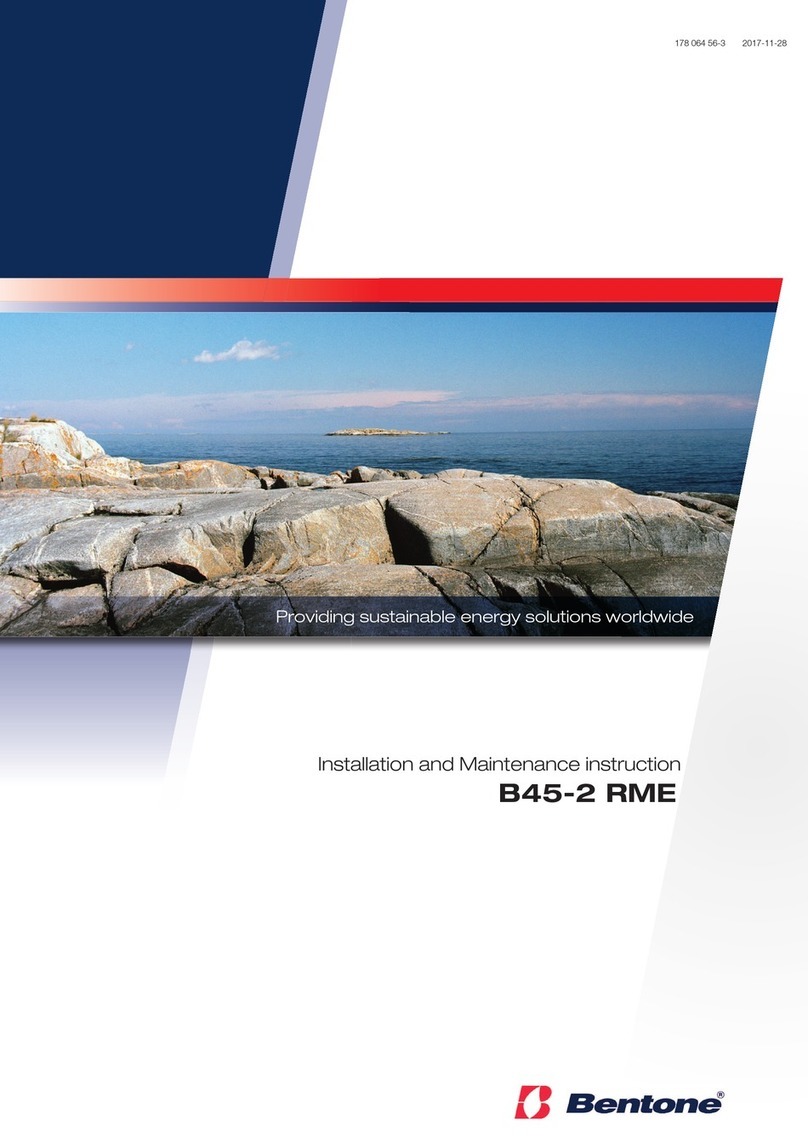
Bentone
Bentone B45-2 RME Installation and maintenance instruction
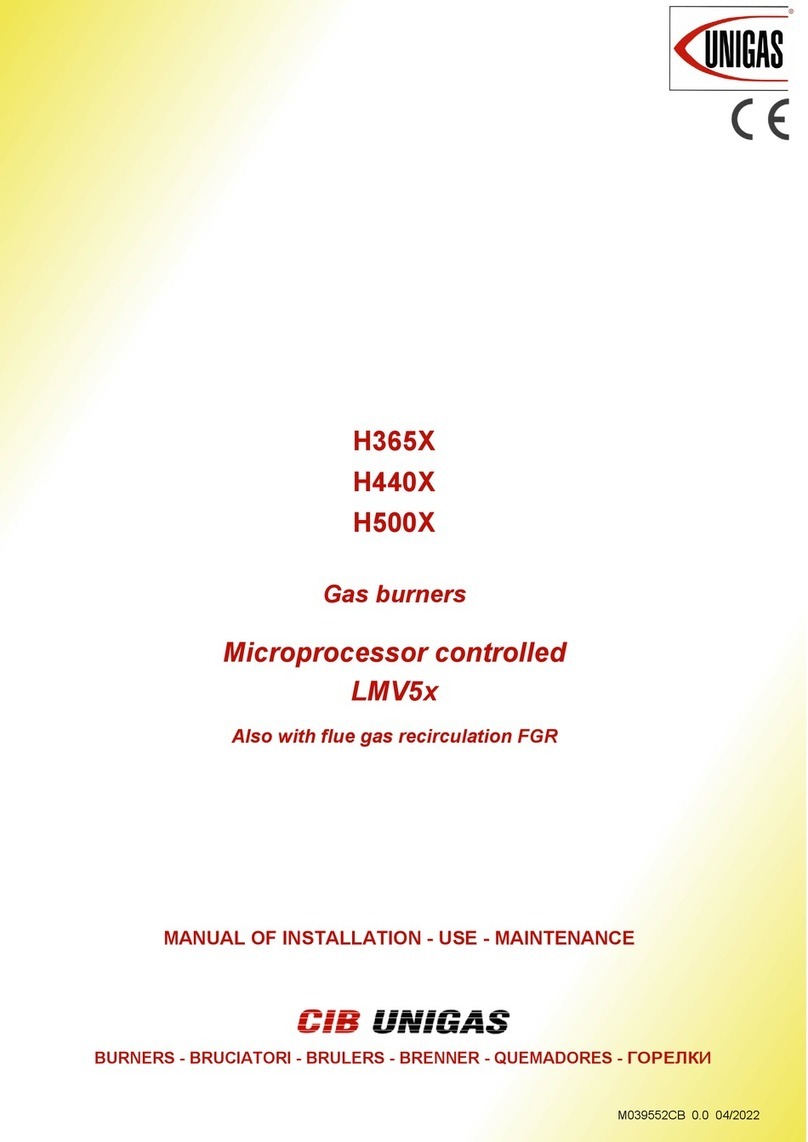
Unigas
Unigas H365X Manual of installation - use - maintenance
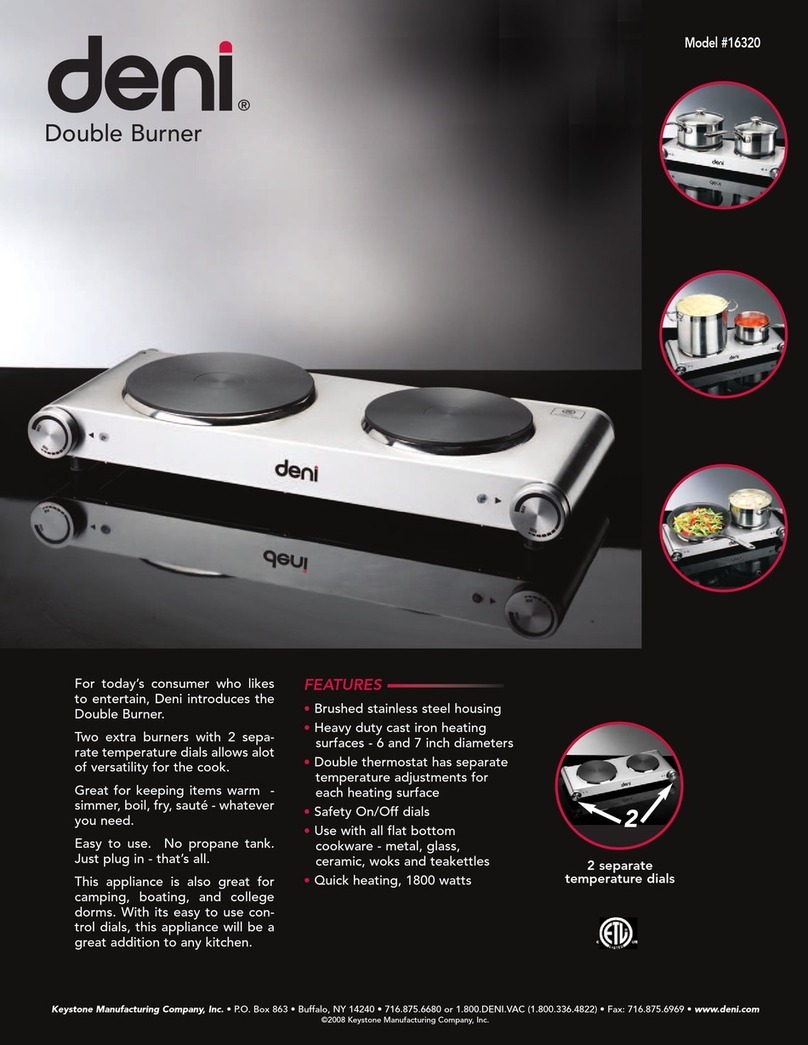
Deni
Deni 16320 Features

Riello Burners
Riello Burners RL 190/M Installation, use and maintenance instructions
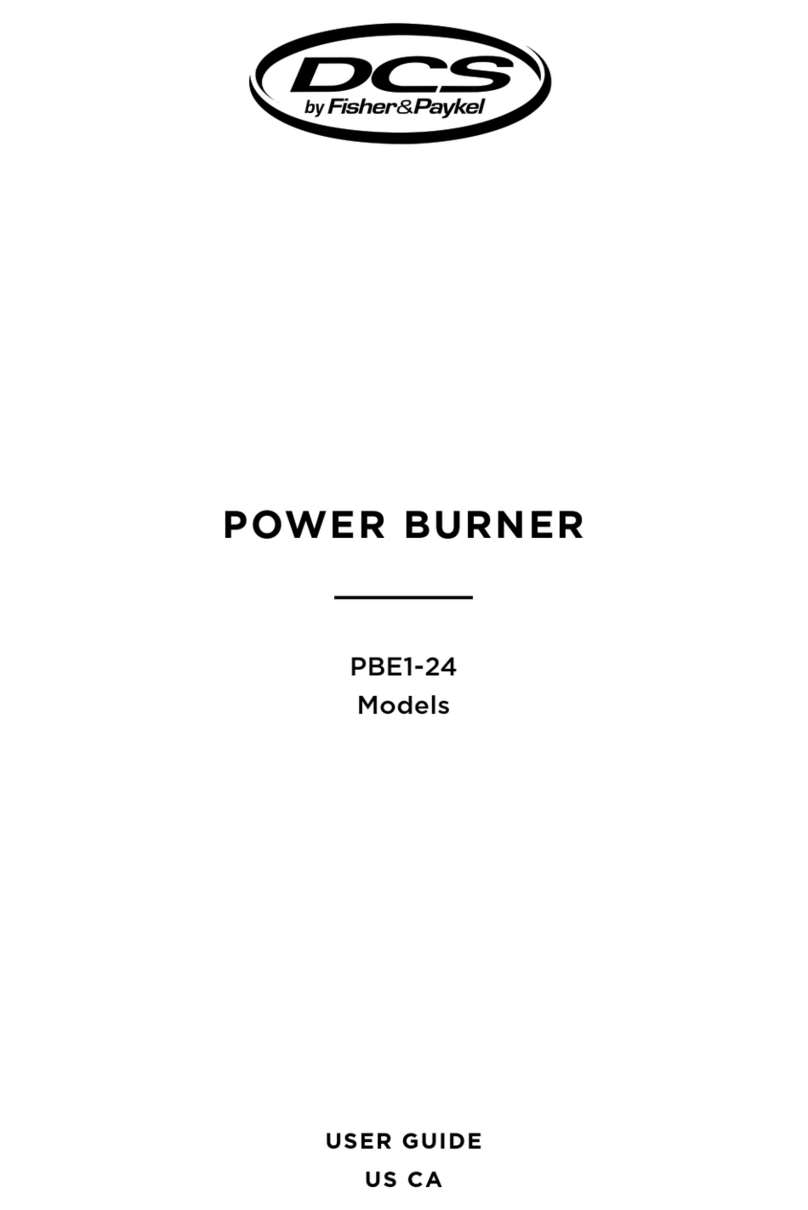
Fisher & Paykel
Fisher & Paykel DCS PBE1-24 user guide
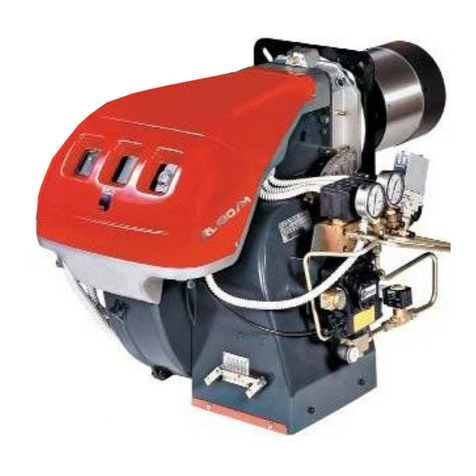
Riello
Riello RS 68/M BLU Installation, use and maintenance instructions
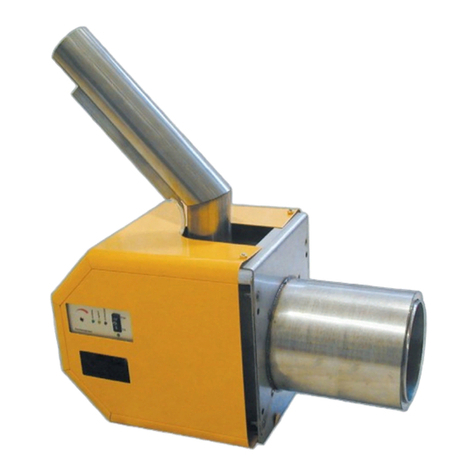
Ariterm
Ariterm PX50 Direction for Installation and Use

Riello
Riello RG4F Installation, use and maintenance instructions
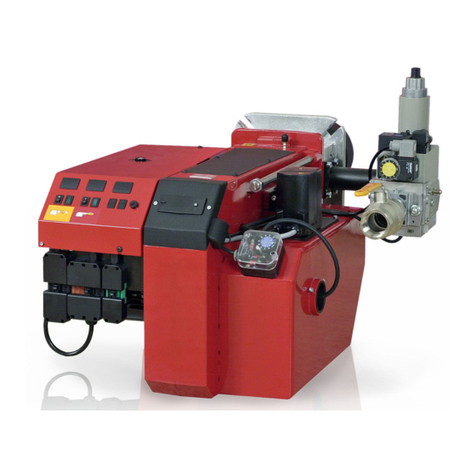
Bentone
Bentone BG550 Series Installation and maintenance instruction
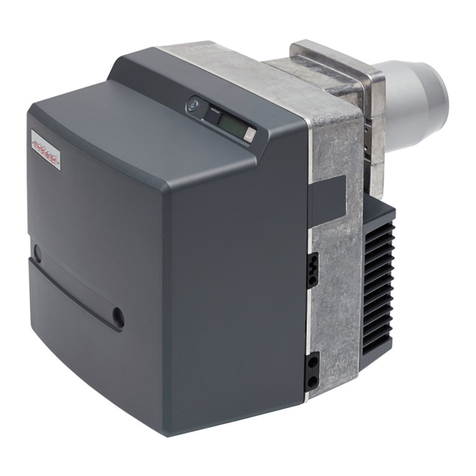
Weishaupt
Weishaupt WL20/1-C Z-1LN manual
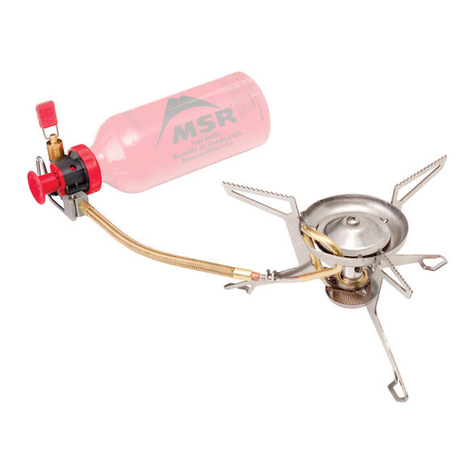
MSR
MSR WHISPERLITE instructions

LAMBORGHINI
LAMBORGHINI ECO 30 Installation and maintenance manual
